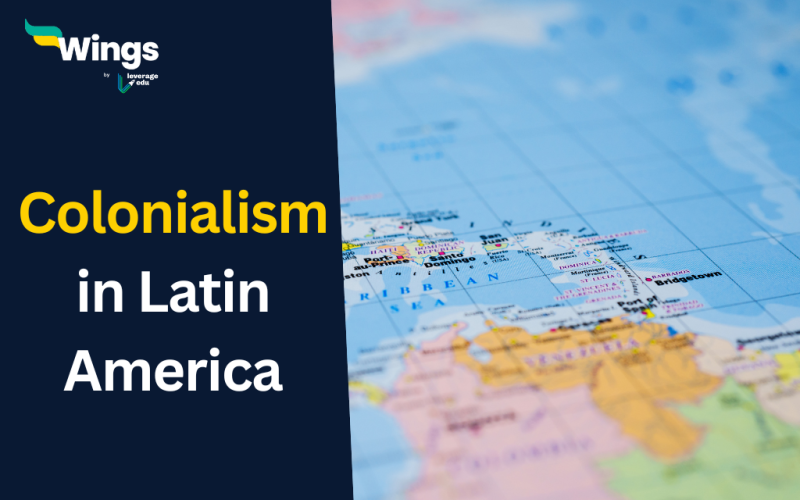Hey, guys! Mr. Owl 🦉 is here. I see that you want to know about ‘Colonialism in Latin America’ Hootfully, I’ll be of help to you! Since we owls are very wise. If you scroll further down this blog, you’ll see all the information you will need!
Colonialism in Latin America is an important part of the world history. During 15th to 18th century, several explorers reached this area in the search of New World. Later, countries like Italy, and Portugal expanded their established in this region. Students who are preparing for upcoming government exams such as UPSC, SCC and more, should cover this topic during their preparation. This will help them to solve questions related to this topic.
Table of Contents
📜History of Latin America Before Colonialism
- Latin America homed an array of civilizations and cultures before the arrival of European colonizers.
- From the Inca Empire in the Andes to the advanced Aztec civilization in Mesoamerica, these societies had their own systems of governance, languages, and traditions.
- The region was then inhabited by natives who thrived through agriculture, trade, and complex social structures.
🤔Who Colonised Latin America?
- Spain was the first European monarchy to establish settlements and exert control over large areas of the Latin American continent, from North America to the southern tip of South America.
- France, Portugal, and other European nations also founded colonies in various parts of Latin America.
🗓️When Did Colonialism in Latin America take Place?
- Latin America became a hotbed for colonialism with the advent of Christopher Columbus’s voyages in 1492.
- European colonizers ensured their presence lasted thus Spanish cities, such as Santo Domingo in the Dominican Republic, were established as early as 1496.
Must Read: What is Colonialism: Definition, History, and Significance
☝️Important Events
Following are some events that shaped the destiny of many natives in Latin America-
- During the early phases of colonization, the Spanish and Portuguese colonisers joined forces and signed a Treaty of Tordesillas in 1494. This treaty led to Spanish and Portuguese domination in various parts of Latin America.
- While the Spanish Crown exerted control over western South America, Central America, and southern North America some other European nations like England, France, and the Dutch Republic attempted to establish colonies as well. Threats from indigenous tribes and cut-throat competition for territories defined this period.
🤷 Most Affected Countries Due to Colonialism in Latin America
Although many Latin American countries and indigenous people suffered under European colonisers, the following are some countries that were struck with some of the most distressing challenges-
Bolivia
- Spanish exploited it for silver and other resources.
- A forced labour system ‘encomienda’,
- Harsh working conditions and exploitation
- Forced to convert and accept Catholicism.
Peru
- Like Bolivia, Peru was a major focus of Spanish colonialism due to its wealth of natural resources, including gold, silver, and agriculture.
- The capital, Lima, became a prominent centre of colonial administration.
✊Decolonisation of Latin America
- Between 1808 and 1826, most of Latin America, except for the Spanish colonies of Cuba and Puerto Rico, managed to break free from Spanish and Portuguese rule.
- The rapidity and timing of this shift resulted from a combination of long-building tensions and external events.
Important Events
- Haitian Revolution (1791-1804), was the first successful slave revolt inspiring other movements.
- The Mexican War of Independence (1810-1821) led by Miguel Hidalgo and José María Morelos, was influenced by the American and French Revolutions.
- The South American Wars of Independence (1810-1825) saw generals and liberators like Simón Bolívar and José de San Martín securing independence.
- Rising nationalism in Latin America fueled a sense of identity.
- The economic decline of European empires weakened their colonial control.
- The American Revolution served as an inspiration for other liberation movements.
“Kiddos, I’ve answered all your queries with the utmost precision that I was capable of. Now, I’ll be taking my leave, but if you think I might have missed something, do check out the FAQ section or drop a comment. I always respond!
Also Read: Redrawal of National Boundaries: Meaning and Historical Significance
FAQs
European colonization in Latin America was primarily motivated by the quest for wealth, the spread of the Catholic faith, and the desire to establish trade routes to Asia.
Indigenous populations in Latin America faced significant challenges during colonization. Such as
(1) Being subjected to forced labour
(2) Disease, and cultural changes
(3) Some people resisted colonization the impact on native populations was often devastating.
The effects of colonialism in Latin America are profound and enduring. This includes
(1) Legacy of cultural blending
(2) Socioeconomic disparities,
(3) A complex diverse society that reflects the fusion of indigenous, European, and African influences.
RELATED BLOGS
| World War 2: History and Causes | French Revolution Notes |
| English Industrial Revolution | What Is Socialism |
| Socialism in Europe and the Russian | What is Imperialism? |
Hope you have gotten all the relevant information about ‘Colonialism in Latin America’! If you want to know more about topics like this, then visit our general knowledge page! Alternatively, you can also read our blog on general knowledge for competitive exams!
 One app for all your study abroad needs
One app for all your study abroad needs













